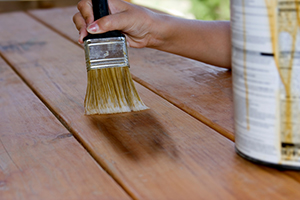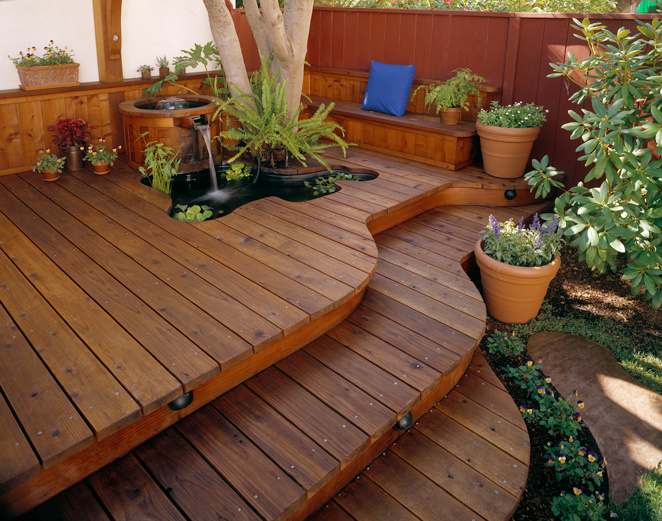 In a recent post on the San Francisco Chronicle online, the freelance writers, brothers Bill and Kevin Burnett, provided a local homeowner with some great tips and information on maintaining a redwood deck. Our readers with subscriptions to the San Francisco Chronicle online may find the original story here, Redwood deck is salvageable with work. Otherwise, we have also provided it below. You may also find additional tips and advice in our own Redwood Maintenance section.
In a recent post on the San Francisco Chronicle online, the freelance writers, brothers Bill and Kevin Burnett, provided a local homeowner with some great tips and information on maintaining a redwood deck. Our readers with subscriptions to the San Francisco Chronicle online may find the original story here, Redwood deck is salvageable with work. Otherwise, we have also provided it below. You may also find additional tips and advice in our own Redwood Maintenance section.
Bill Burnett and Kevin Burnett
Q: I have a redwood deck that is in bad need of refinishing. I read your column regularly and remember you’ve said that redwood decks should be regularly maintained. I’m afraid I’ve been a slacker. In six years, the only thing I’ve done is give it an occasional sweeping.
The wood is moldy in spots and is generally filthy. I hope I haven’t let the maintenance go for so long that I’m going to have to replace the deck. Structurally, the decking seems to be sound, so I’m hoping it’s salvageable. What are your recommendations?
A: If the wood is sound the deck is salvageable. All it takes is a good cleaning and proper refinishing. Once you’ve done the job this time, please don’t wait six years to do it again. Repeating the refurbishing process every couple of years will make the job easier and keep the deck looking good.
Usually we recommend a good power washing, time for the wood to dry and then a couple of coats of a deck finish containing a mildewcide and UV protection. This case is extreme and calls for extreme measures. Cleaning the deck is going to take a couple of steps.
The California Redwood Association (www.calredwood.org) has lots of good information including grades of lumber, interior and exterior uses and maintenance tips.
According to this trade group, “microorganisms, dirt and soot contribute to the discoloration of any wood used outdoors. Effects can range from wood turning a driftwood gray due to ultraviolet radiation and precipitation, to it turning nearly black as a result of mildew growth, soot accumulation or extractive staining (leaching of tannins from the wood). Black discoloration may also result from iron in nails or other hardware, or from contaminated finishes and airborne particles.”
It appears your deck has it all, except perhaps the nail stains.
Getting rid of the mold and staining is a two-part process. The first step is to mix and apply a solution of a combination of one cup of trisodium phosphate, 1 cup of oxalic acid and 1 cup of household bleach dissolved in a gallon of water to the entire area. The bleach takes care of the mold and the oxalic acid will remove the tannins.
Oxalic acid is dangerous, so take the following precautions. Wear rubber gloves, long pants and a long-sleeve shirt. Don’t forget to wear eye protection.
Apply the mixture with a soft brush, then rinse the area thoroughly with clean water. Follow this step with an application of 4 ounces of oxalic acid crystals dissolved in warm water and rinse thoroughly.
To clean off any residual dirt, mix a solution of household detergent in warm water and scrub the decking with a stiff bristle brush. A commercial deck cleaner, available at hardware stores and home improvement centers can substitute for the detergent. In any case, do not mix bleach with any detergent containing ammonia. The combination can be lethal.
When the cleaning is done, it’s time to apply a protective finish. Look for a high-quality product containing mildewcides, water repellents and ultraviolet protection to provide the best performance. Follow the manufacturer’s recommendations regarding application conditions, coverage rates and number of coats.
Expect to clean the deck and reapply the finish within a couple of years. Maintaining a regular cycle will greatly reduce the amount of preparation prior to refinishing.
The Burnett brothers are freelance writers. They may be contacted via email: sweatequity@sfchronicle.com.
